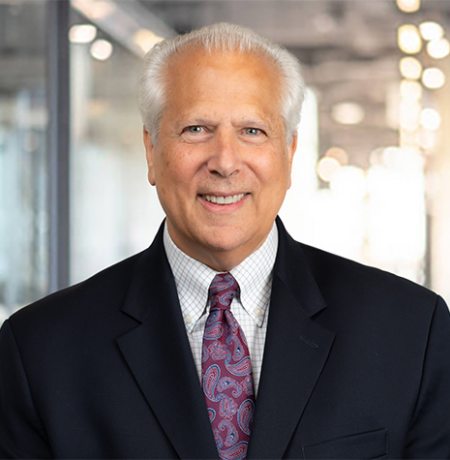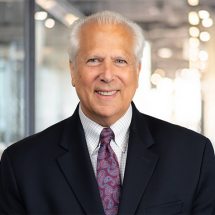
Last month, we had the pleasure to join our colleague, Ken Kaufman, in a conversation with E. Gordon Gee, president of West Virginia University (WVU). Gee was first named president of WVU in 1981—his first job as chief executive officer of a university—and returned to WVU for his current tenure in the role in 2014. In between, he served as president at the University of Colorado, the Ohio State University, and Brown University, and as chancellor at Vanderbilt University.
Gee has experienced much change in his 42 years of university leadership, and he sees many higher education leaders now facing a difficult conundrum: they know their institutions must change or die, but many of their stakeholders seem more willing to die than change. “University leaders are not like corporate leaders,” Gee says. “They must lead by persuasion, and they will need to muster all their persuasive and political skills to overcome an internal tug and pull that often impedes efforts to move their institutions forward.”
Gee divides colleges and universities into three categories:
- Institutions that will not survive. “These include small, tuition-dependent institutions that have an unsustainable business model that has become unaffordable and do not have the prestige of the few highly selective institutions that can still charge high tuition.”
- “Red ocean” institutions that “will hang around the shore fighting and scratching and pounding each other and generating a lot of blood in the water” as they confront issues such as the demographic cliff and declining enrollments.
- “Blue ocean” institutions that have differentiated themselves in the marketplace. “They haven’t gotten there by reading U.S. News,” Gee notes. “They have discovered for themselves what they do best and what makes them different.”
At WVU, the differentiator has been reclaiming the institution’s role as “the people’s university.” Reclaiming this role has required persistence and hard work: Gee makes a point of visiting every county in the state every year, and takes “country roads” tours with new faculty to show West Virginians what they are working on and how it benefits the state and its flagship university. “You have to bridge the gap between the insular world of the university and the people you depend upon for its support,” Gee observes. “If you keep coming back, people realize that you believe in them. You have to get out of the cocoon and become a servant institution.”
Gee believes there are very few similarities between public and private institutions, and a key difference is the sheer number of constituents whom public university leaders must communicate with and engage, including the state’s citizens and their elected representatives. In addition to the internal tug and pull between administrators and faculty that all higher education leaders must negotiate, public university leaders also must negotiate external tugs and pulls. “You can’t communicate enough, and it can be exhausting,” Gee says. “But at a public institution, I know why I get every up morning. It’s to help my state address problems like a high poverty rate and the need to create new opportunities.”
Gee identifies three main responsibilities of the university president:
- Set the tone and values for the institution.
- Hire very talented people and let them do what they should be doing.
- Work to garner the resources your team needs to support their work.
“You want to hire the best horses and let them run,” says Gee. “Your job is to be a facilitator and a cheerleader.”
Gee doesn’t believe in a lot of meetings. He gathers his senior leaders in a conference room off his office once a week for a 90-minute meeting. The first 30 minutes of every meeting are dedicated to culture. “We spend a lot of time on the culture that we’re trying to create and maintain at WVU. Getting the culture right is the only way to change the course of an institution.” Part of the culture Gee is trying to build at WVU is a firm commitment to free speech. “If you limit ideas, you destroy the purpose of the university,” he notes.
Gee also stresses the need for colleges and universities to embrace a culture that values effectiveness and efficiency. “In many ways, higher education is where healthcare was 25 years ago,” he says. “Healthcare has now learned to professionalize management. Higher education must convince people that being effective and efficient is in their best interests. It helps ensure, for example, that you have more resources for salaries and research.”
Keeping the administration lean and agile is critical to this effort, as is having a strong provost. “The provost must be thick-skinned and willing to make tough decisions—for example, to close underperforming programs or colleges—while convincing constituents that these decisions will make the institution better,” Gee notes.
Not every decision will be correct, and recovering from mistakes is hard: “This is why many college and university presidents don’t like to make decisions,” Gee observes. “Higher education has lost people who have the willingness or ability to speak out, but at some point, someone has to say, ‘the emperor has no clothes.’”
If Gee could give advice to himself when he was beginning his career as a university president, he would say, “Listen carefully and stake your claims on the things that can change the institution.”
Higher education leaders today should take note of the gift that the pandemic gave to colleges and universities: “It showed them that change could happen and happen quickly, with the rapid turn toward internship programs and hybrid education models,” says Gee. “Higher education now needs to move its gaze away from the rearview mirrors to the windshield and focus on the changes required for the future.”









